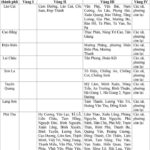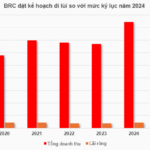The Ministry of Justice is appraising the draft Decree amending and supplementing a number of articles of Decree No. 29/2023 of the Government on streamlining the apparatus, drafted by the Ministry of Home Affairs.

Minister of Home Affairs Pham Thi Thanh Tra. (Photo: Pham Thang)
Decree No. 29/2023 stipulates that “For two consecutive years at the time of consideration for streamlining, officials, public employees, and civil servants must have one year of quality assessment at the level of completing the task and one year of not completing the task, but unable to be arranged for other suitable jobs” to be subject to streamlining.
In the new draft Decree, the Ministry of Home Affairs proposes to change this to “In the year immediately preceding or in the year of the implementation of the streamlining consideration, the quality assessment is at the level of not completing the task” will be subject to streamlining.
The Ministry of Home Affairs stated that this change is to ensure consistency with the provisions of the draft Law on Officials and Public Employees of 2024 (amended), which is about to be promulgated (regarding the termination of employment for public employees who do not complete their tasks for one year).
In addition, the draft Decree stipulates that “In the year immediately preceding or in the year of the implementation of the streamlining consideration, the total number of working days off due to illness is equal to or higher than 300 days, with confirmation from the social insurance agency paying sick leave benefits in accordance with the current law provisions” shall be subject to streamlining.
This regulation replaces the old regulation in Decree 29: “For two consecutive years at the time of consideration for streamlining, each year has a total number of working days equal to or higher than the maximum number of days off due to illness as prescribed in Clause 1, Article 26 of the Law on Social Insurance, with confirmation from the social insurance agency paying sick leave benefits in accordance with the current law provisions”.
According to the drafting agency, this change is to align with the reality that those who take a high number of sick days (more than 300 days) in a year should be subject to streamlining.
Furthermore, the draft also removes the subject “officials, public employees, and civil servants who are being disciplined but have not reached the level of dismissal or forced resignation under the provisions of the law at the time of consideration for streamlining, individuals who voluntarily undergo streamlining, and are agreed upon by the direct managing agency, organization, or unit”.
The Ministry of Home Affairs explained that this removal is because, according to legal regulations, disciplined individuals will be assessed as not completing their tasks. Therefore, these subjects are already included in the streamlining targets.
“Proposed Four Groups for Staff Rationalization During Provincial and Communal Mergers”
The draft decree amending and supplementing Decree No. 29/2023 on streamlining the workforce stipulates four groups of subjects who are subject to this process, according to the Ministry of Home Affairs.
A Fresh Directive: The Minister of Home Affairs’ New Scheme for Resigning Officials.
“The Minister of Home Affairs has tasked the Department of Organization and Personnel to take the lead in coordinating with relevant units to closely monitor and regularly update the number of officials, civil servants, and public employees who leave their jobs due to organizational restructuring. This information will be proactively sent to the Ministry of Finance to facilitate budget allocation and timely additional funding for the payment of allowances and benefits to those who have left their positions as a result of the structural adjustments.”
“Proposed Application of Minimum Wage Rates in Six Centrally Governed Cities”
The proposed salary adjustments for Hanoi and Ho Chi Minh City’s communal-level subdivisions are intriguing. Hanoi’s districts are expected to implement minimum wage standards based on Regions I and II, while Ho Chi Minh City’s will apply a more varied range, from Region I to Region III, reflecting the unique socioeconomic landscapes of these vibrant cities.














































